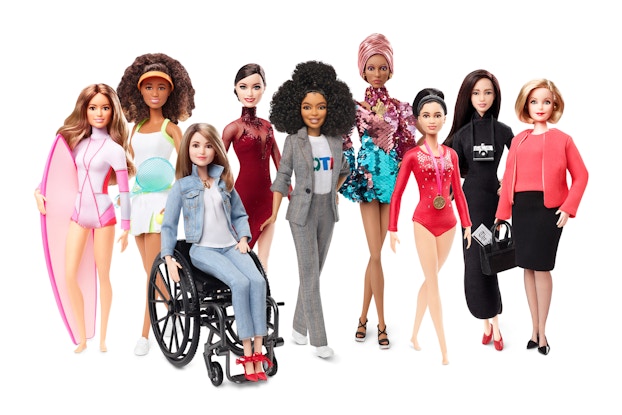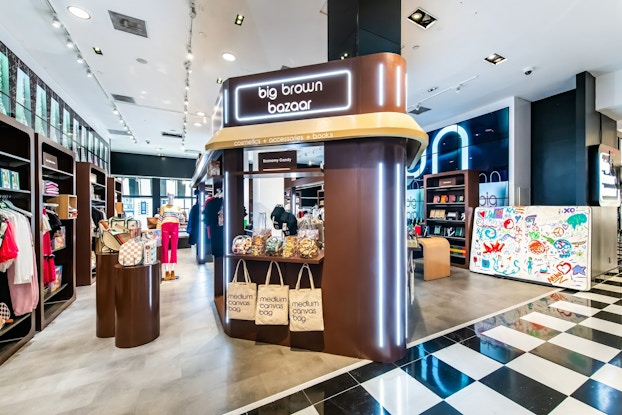
Why it matters:
- A study by consulting firm Kantar found 52% of 12- to 29-year-old consumers prefer classic brands.
- 81% of those young consumers also said they like it when brands bring back products and trends from their childhood.
- Businesses large and small can tap into the trend by offering consumers new ways to experience the past.
Businesses and brands are learning that the past can be a powerful tool to reach consumers—particularly the most coveted demographic group, Gen Z.
Marketers have discovered that Gen Z and millennial consumers are responding to fashions, products, and trends that were big before they were born, while Gen X shoppers are seeking out reissues of brands that were popular when they were kids.
Brands also are reminding consumers of their long histories with ad campaigns highlighting products that have been around for 50 years or longer.
"Barbie," a movie celebrating a 64-year-old toy brand, is the top-grossing movie of the year. Pepsi has a new logo that reflects a style it first unveiled in 1970. Hostess Brands was recently acquired for $4.6 billion, reflecting the pandemic-driven popularity of retro snacks like Twinkies, first sold in 1930.
Fashion houses like Givenchy and Bottega Veneta featured 1990s grunge fashions in recent runway shows, and Levi’s last year re-released its Silvertab baggy jean, popular in the hip-hop and skating culture days of the 1990s.
Bloomingdale’s this year banked on nostalgia for a shopping bag, with a month-long marketing campaign in September celebrating the 50th birthday of its iconic Big Brown Bag shopping bag.
Businesses monetize the ‘staying power and cultural relevance’ of heritage brands
The nostalgia trend “speaks to the staying power and the cultural relevance of established brands with heritage and legacy,” said Casey Ferrell, Senior Vice President and Head of U.S. and Canada MONITOR, the consumer insights division of global consulting firm Kantar. But for nostalgia to drive sales, it must combine something new along with the old, Ferrell cautioned. “Nostalgia is an interpretation of the past, not a reliving of the past,” he said. “It has to say something about the future, while it is bringing back the past.”
Nostalgia is an interpretation of the past, not a reliving of the past,” he said. “It has to say something about the future, while it is bringing back the past.Casey Ferrell, Senior Vice President and Head of U.S. and Canada MONITOR, Kantar
The Barbie phenomenon: A case study in how to market the nostalgia trend
The Barbie movie is a great example of a putting a modern spin on a legacy brand, Michelle Brisson, Senior Consultant and Head of Kantar MONITOR’s youth insights, told CO—.
“Any time you can put a fresh lens on a brand, it’s helping the younger generation to feel they have something new that also fits with their values,” Brisson said.
The Barbie movie has taken in over $1.4 billion at the box office and is expected to boost Mattel’s revenues this year by at least $125 million, thanks to movie proceeds and sales of toys and related merchandise.
MONITOR’s research this year discovered that today’s teens are responding to nostalgia campaigns, even if they weren’t born when the trend that is being referenced was popular.
“For Gen Z, it’s really where they are finding a sense of novelty and excitement and newness, because it’s all new to them,” unlike Gen Xers, or millennials, who are remembering moments from their own pasts, Brisson said.
Maura Regan, president of Licensing International, the trade organization representing the $340 billion-plus global brand licensing industry, says the pandemic helped contribute to the nostalgia trend.
“I think we’re seeing more of it because during stressful times people gravitate to what’s familiar,” Regan told CO—.
“Nostalgia,” Regan said, is a “longing for a time and event or product that brings you comfort and that sense of joy or calm. It evokes a very strong, positive emotional response,” she said.
[Read: How Big Brands Turn Customer Reviews Into Sales]

‘Newstalgia’ fuels toy business
In the toy industry, manufacturers are embracing what they are calling “newstalgia” – reissues of classic toys that have been given an update. Hasbro, for this Christmas, has reissued Furby, the electronic pet that was a hit 25 years ago, but in a fuzzier, cuter versions, with tech skills updated for 2023.
Much of the current nostalgia trend involves products and memories from the 1980s and 1990s and is driven by Gen Xers being in their prime earning years, Ferrell said.
“Gen Xers are having a bit of a moment in the same way that boomers did when they were 20 years younger – the same way that millennials are going to probably have their moment 15 years from now,” he said.
While Xers are bringing back things that meant a lot to them when they were younger, Gen Z consumers are latching on to the same things because “they’re longing for simpler times and things that were easier to understand,” Ferrell said.
Brands with nostalgia campaigns are responding to a phenomenon that is very much “people-led and culture-led,” rather than marketing-led, he said. Brands see vintage styles or products trending on social media, and react.
“There’s clearly an appetite in the market,” Ferrell said. “Consumers are really interested and open to it.” Most brands, however, still aren’t using nostalgia in their advertising.
Kantar research has found that over the past dozen years or so, nostalgia has been used, depending on the year, in only between 1% and 4% of ads.
The most effective ads, however, are using it, he said.
“Ads that feature nostalgic elements are more distinctive, they create stronger emotional connections” and they are more likely to go viral, he said.
The small business opportunity: ‘Gen Zers prefer brands that have been around for a long time’
Small- and medium-sized businesses, even young ones, can tap into the power of nostalgia by highlighting their history and their story with social media posts, Brisson and Ferrell said.
“Some of our data that surprised us this year showed that more than half of Gen Zers were saying they prefer brands that have been around for a long time versus new, trendy brands,” Brisson said. “So it does lend some authenticity if you have the heritage to be able to look back on your brand’s past and your legacy and offer that new twist on it.”
Another key piece of advice Ferrell and Brisson have for brands and businesses large and small is to watch trends, listen to consumers, and let them tell you what they are nostalgic for, rather than the brand deciding what they should be nostalgic for.
“You have to follow the consumer when it comes to what’s resonating from a nostalgic standpoint, and let the consumer take you to whatever part of your past they’re most interested in,” Ferrell said.
CO— aims to bring you inspiration from leading respected experts. However, before making any business decision, you should consult a professional who can advise you based on your individual situation.
CO—is committed to helping you start, run and grow your small business. Learn more about the benefits of small business membership in the U.S. Chamber of Commerce, here.

Interested in a small business membership?
Find out how the U.S. Chamber of Commerce can help your company grow and thrive in today's rapidly-evolving business environment. Connect with our team to learn how a small business membership can benefit your bottom line and help you achieve your goals.







